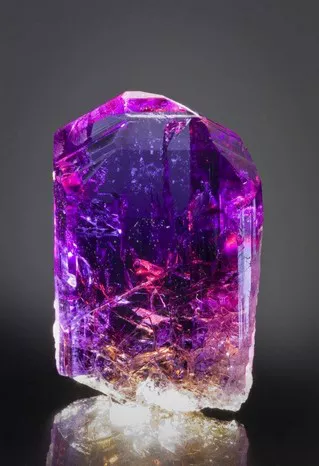Tanzanite is a breathtaking gemstone known for its vibrant blue-violet hue and remarkable brilliance. It is highly sought after by collectors and jewelry enthusiasts around the world. One of the key factors contributing to tanzanite’s allure is its rarity. This article explores the reasons behind tanzanite’s scarcity, shedding light on its geological origins, limited supply, and the challenges associated with its mining and extraction.
GEOLOGICAL ORIGINS
Tanzanite is found in only one place on Earth: the Merelani Hills of Northern Tanzania, near Mount Kilimanjaro. Its formation can be traced back millions of years to a unique geological event. The Merelani Hills were once part of an ancient ocean floor that underwent tectonic plate movements and intense heat from nearby volcanic activity. These forces caused metamorphism of certain rocks, resulting in the formation of tanzanite.
The specific conditions required for tanzanite to form are incredibly rare. The gemstone is formed when calcium-rich minerals undergo a transformation due to the presence of vanadium, which imparts the characteristic blue-violet color. Such occurrences are exceedingly uncommon, making tanzanite one of the scarcest gemstones on the planet.
LIMITED SUPPLY
Tanzanite’s scarcity can be attributed to several factors that limit its supply. Firstly, the mining area in the Merelani Hills is relatively small, covering just a few square kilometers. This confined region contains the primary source of tanzanite, known as the “tanzanite block.” The concentration of tanzanite within this area is not evenly distributed, further reducing the availability of high-quality gems.
Additionally, tanzanite deposits occur at great depths, often reaching several hundred meters underground. Accessing these deposits requires extensive mining operations, including excavation and tunneling. As a result, tanzanite mining is a labor-intensive and challenging process.
MINING CHALLENGES
Mining tanzanite presents numerous obstacles that contribute to its rarity. Firstly, the underground mines are prone to unstable geological conditions, making them hazardous for miners. The risk of collapses and landslides necessitates careful planning and safety measures, further complicating the extraction process.
Furthermore, tanzanite occurs in association with other minerals, such as graphite and garnet. Separating these minerals from the gemstone requires meticulous sorting and grading, adding to the complexity of mining operations and reducing overall efficiency.
ETHICAL CONSIDERATIONS
The scarcity of tanzanite is also influenced by ethical considerations. The Tanzanian government has implemented regulations to protect the country’s natural resources and promote sustainable mining practices. These regulations limit the number of active mines and impose strict environmental and social standards on mining operations.
While these measures are commendable, they further restrict the supply of tanzanite. Compliance with these regulations adds to the costs and complexity of mining, making it even more challenging to meet the growing global demand for this precious gemstone.
MARKET DEMAND
Despite its rarity, tanzanite’s popularity has soared over the years. Its unique color and exceptional brilliance have captivated jewelry enthusiasts worldwide. The gemstone’s increasing demand, coupled with limited supply, has led to rising prices and a sense of exclusivity.
Tanzanite’s position as the birthstone for December has also contributed to its market demand. Individuals born in this month seek out tanzanite jewelry as a personal and meaningful choice. The emotional connection associated with birthstones fuels the desire for tanzanite, further accentuating its rarity and desirability.
CONCLUSION
In conclusion, tanzanite’s rarity stems from its unique geological origins, limited supply, and the challenges involved in its mining and extraction. Its formation in the Merelani Hills of Tanzania under specific conditions makes it an exceptionally rare gemstone. The confined mining area, deep deposits, and associated mining challenges further limit the availability of tanzanite.
Ethical considerations and regulations imposed by the Tanzanian government also contribute to tanzanite’s scarcity. While these measures ensure sustainable mining practices, they add additional complexities and costs to the extraction process.
Despite its rarity, tanzanite continues to captivate jewelry enthusiasts worldwide. Its striking beauty and symbolic significance as the birthstone for December have made it a highly coveted gemstone. As a result, tanzanite remains an exclusive and cherished gemstone, treasured for its scarcity and undeniable allure.


